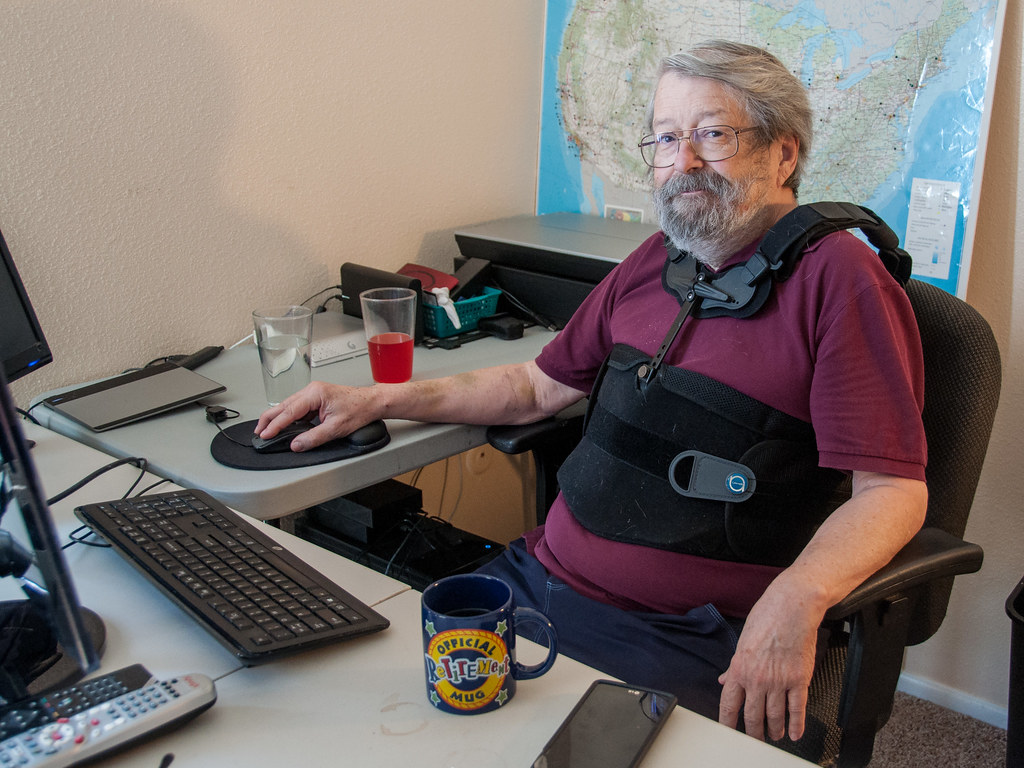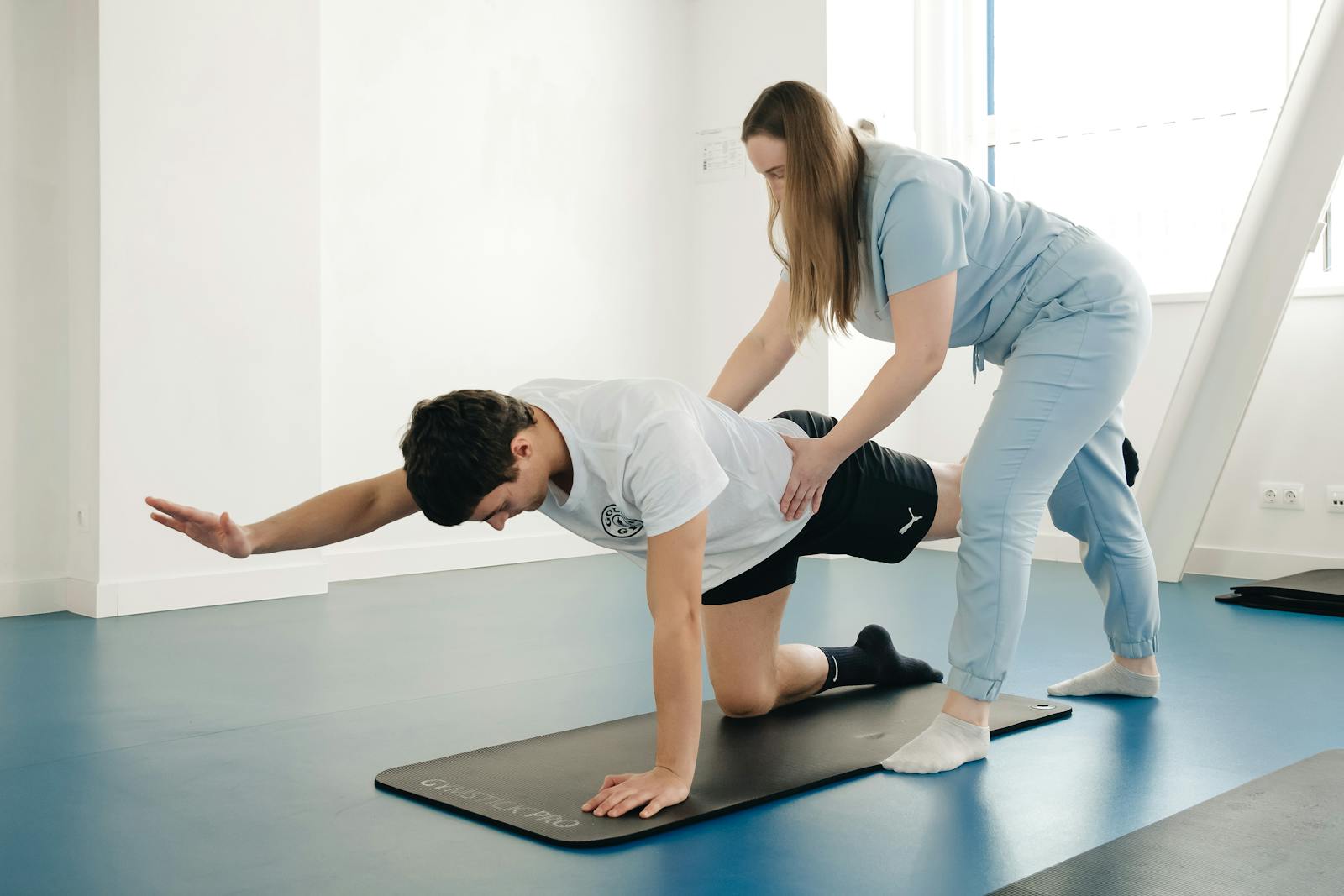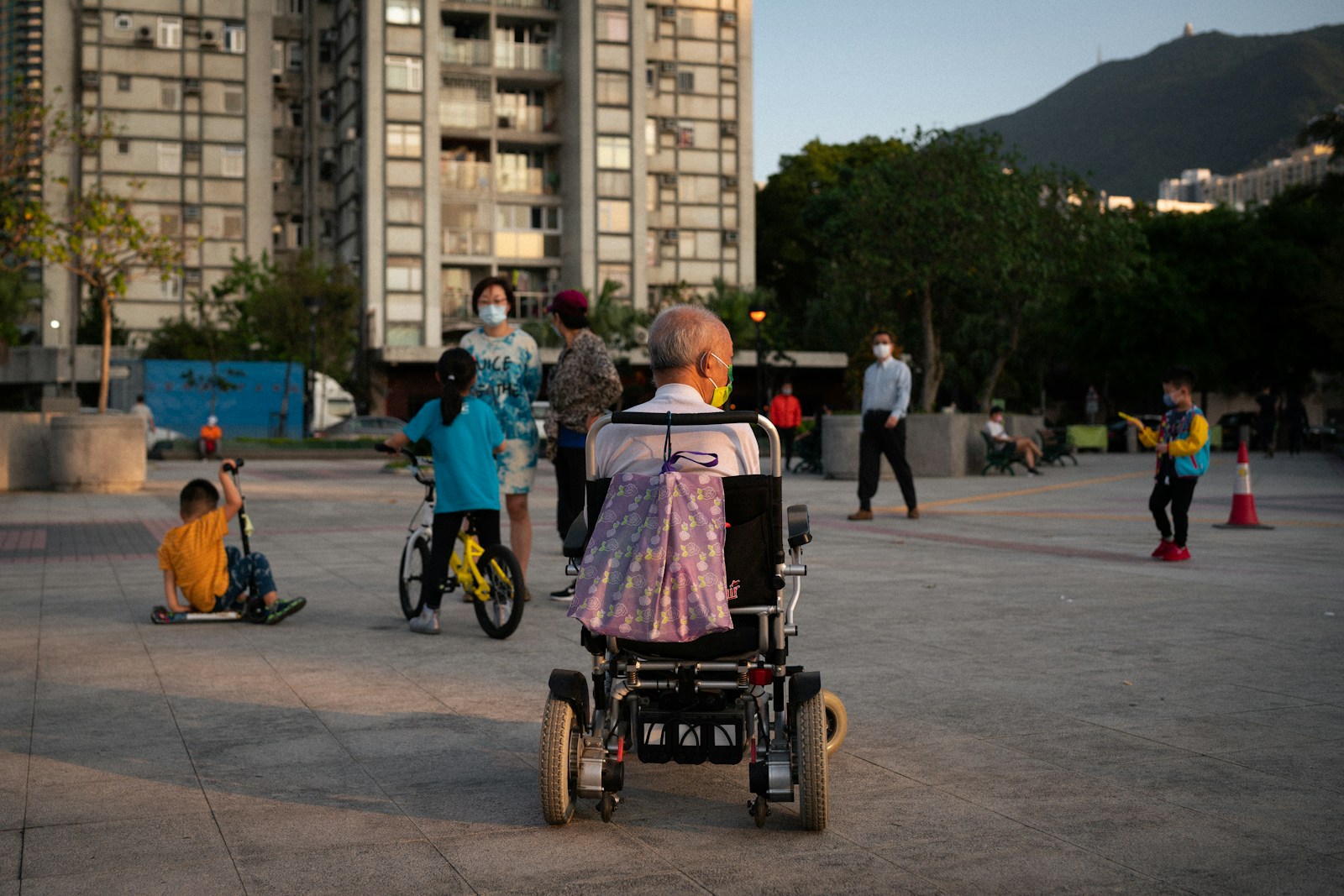The management of spine injuries in the elderly population necessitates a thorough understanding of the unique physiological and socio-environmental factors associated with aging. As the elderly demographic continues to expand, healthcare professionals are confronted with the challenge of providing excellent care for this vulnerable group, while also mitigating the impacts of concurrent health conditions. This discussion aims to shed light on the multilayered aspects of this topic, from preventative measures to caregiver roles, and invites further exploration into the complexities of elderly spine injury care.
Understanding Spine Injuries
The intricate architecture of the human spine, an essential component of our skeletal system, is often susceptible to various forms of injuries, particularly in the elderly, due to factors such as age-related wear and tear, osteoporosis, or accidents. Understanding spinal cord anatomy is important in comprehending how these injuries occur and the potential impact they may have.
The spinal cord, a complex structure, comprises 33 vertebrae, cushioned by intervertebral discs, which helps in the movement and flexibility of the back. It is also the main pathway for transmitting neural signals between the brain and the rest of the body. An injury to the spine can have far-reaching implications, affecting not just mobility, but also bodily functions and quality of life.
Injury prevention measures, therefore, are paramount. These could include maintaining a healthy diet and regular exercise to strengthen the muscles supporting the spine, using assistive devices for balance, and taking extra caution to avoid falls. Additionally, regular check-ups can help detect early signs of issues such as osteoporosis that may increase the risk of spinal injuries. Understanding the spine’s anatomy and adopting preventative measures is an important step towards safeguarding the health of our spine as we age.
Aging and Spine Health
As individuals progress into their golden years, it becomes increasingly important to monitor and maintain spinal health, given the heightened risk of injury and degeneration due to age-related changes in the body. Aging affects the spine in several ways, most prominently through the natural loss of bone density. This reduction in bone strength and stability can lead to an increased susceptibility to fractures and other spinal complications, making preventive measures paramount.
Well-balanced senior nutrition plays a critical role in maintaining bone health and delaying spinal degeneration. A diet rich in calcium, Vitamin D, and protein aids in preserving bone density and muscle mass, which are essential for spinal support. Regular physical activity, especially weight-bearing exercises, can also help to maintain bone strength and spinal flexibility.
Moreover, routine check-ups are essential for early detection of any potential issues. Regular screenings can identify decreases in bone density, allowing for timely intervention. Aging is a natural process, and while we cannot stop it, we can certainly manage its impact on our spine health. By staying informed and proactive, the elderly can effectively mitigate the risks associated with aging and maintain a high quality of life.
Common Spine Injuries in Elderly
The elderly population often faces a variety of spine injuries, with some of the most common ones being age-related spinal degeneration, fractures due to osteoporosis, and the management of spinal stenosis. These conditions not only impact their physical health but also greatly affect their quality of life. Understanding and addressing these common injuries is essential, as it allows for more informed care decisions and proactive management strategies.
Age-Related Spinal Degeneration
With advancing age, spinal degeneration often emerges as a common, yet significant, health challenge among the elderly, characterized by gradual wear and tear of the spinal discs, and leading to a myriad of discomforts and mobility issues. Degenerative disc diagnosis becomes essential in managing these conditions effectively to maintain quality of life.
- Degenerative Disc Disease (DDD): This progressive condition often results in chronic pain and reduced mobility. Diagnosis involves imaging tests such as MRI or CT scans.
- Cervical Spondylosis: This affects the neck region of the spine, causing stiffness and pain. Its impact can be far-reaching, affecting daily activities.
- Lumbar Spondylosis: This is degeneration in the lower back, causing pain and reduced flexibility.
Understanding these conditions can lead to more informed decisions about treatment and care.
Fractures Due to Osteoporosis
Often, elderly individuals are susceptible to fractures due to osteoporosis, a condition that weakens bones and makes them more prone to injury, particularly in the spine. The declining bone density plays a vital role in the fragility of the vertebrae, leading to frequent fractures. These fractures often result in severe pain, height loss, and deformity, seriously compromising the quality of life.
Calcium intake plays an essential role in maintaining bone health. Unfortunately, as aging progresses, the absorption of calcium decreases, exacerbating bone fragility. Regular check-ups for osteoporosis and monitoring calcium intake can help manage this condition. It’s important to understand that early detection and intervention can greatly reduce the risk of spine fractures due to osteoporosis in the elderly.
Managing Spinal Stenosis
Spinal stenosis, a common spinal injury in the elderly population, requires careful management to mitigate pain and maintain mobility.
- Stenosis diet: This refers to a diet rich in anti-inflammatory foods that can help reduce inflammation in the body and potentially alleviate the symptoms of spinal stenosis. It includes fruits, vegetables, whole grains, and lean proteins.
- Therapeutic massage: This is a non-invasive treatment that can help alleviate the pain associated with spinal stenosis. It promotes blood flow, reduces muscle tension, and aids in relaxation.
- Exercise and physical therapy: Regular movement can help maintain mobility, flexibility and strength.
With informed management strategies, it is possible to enhance the quality of life for elderly individuals living with spinal stenosis.
Risk Factors for Elderly Spine Injuries
Age-related degeneration and specific lifestyle choices are among the significant risk factors contributing to spine injuries in the elderly population. As the body ages, the spinal discs naturally lose their flexibility, elasticity, and shock-absorbing characteristics, making them more susceptible to injury.
Fall prevention is an important aspect of mitigating this risk. Poor balance, decreased muscle strength, and certain medications can increase the likelihood of falls, leading to severe spine injuries. Hence, regular balance and strength exercises, along with careful medication management, are essential in reducing fall risk.
Nutrition also plays a pivotal role in spine health. Malnutrition or a diet lacking in essential vitamins and minerals can lead to weakened bones and muscles, increasing the risk of spinal injuries. A balanced diet rich in calcium, vitamin D, and protein can help maintain bone health and muscle strength, thereby reducing the risk of injury.
Lastly, lifestyle choices such as smoking and excessive alcohol consumption can exacerbate age-related degeneration, making the spine more prone to injuries. Thus, maintaining a healthy lifestyle is crucial in preventing spine injuries in the elderly.

Impact of Osteoporosis on Spine
In the field of geriatric health, osteoporosis stands as a substantial factor that amplifies the vulnerability of the spine to serious injuries, primarily due to the bone-thinning phenomenon associated with this condition. Reduced bone strength and density in the elderly can lead to spinal fractures even with the slightest fall or trauma.
- Bone Density Testing: Regular bone density testing can help early detection of osteoporosis, thereby reducing the risk of spine injuries. It measures the amount of calcium and other minerals packed into a segment of bone, which directly correlates to its strength.
- Calcium Supplementation Benefits: Adequate calcium intake is pivotal in preserving bone health. Calcium supplements can help in maintaining bone density and strength, thereby reducing the risk of spinal fractures in patients with osteoporosis.
- Osteoporosis Management: Apart from regular testing and supplementation, lifestyle modifications like a balanced diet, regular exercise, and quitting habits like smoking and alcohol can significantly improve bone health and reduce the risk of falls and fractures.
Understanding the impact of osteoporosis on the spine is essential in elderly care. With appropriate preventive measures and management, the risk of spinal injuries can be greatly mitigated.
Delayed Healing in the Aged
The aging process naturally brings with it a slowdown in the body’s healing capabilities, which is particularly pertinent when considering spine injuries in the elderly. This delay can be exacerbated by chronic conditions that are more prevalent in the older population, adding another layer of complexity to their recovery journey. Understanding these factors is critical to ensuring best care and management of this vulnerable demographic.
Age-Related Healing Factors
As individuals advance in years, their capacity for healing from spine injuries greatly diminishes, a phenomenon largely attributable to a variety of age-related factors.
- Healing Diet: Elderly individuals often have compromised nutritional status. This can affect the body’s ability to repair damaged tissues, leading to delayed healing. A balanced diet, rich in proteins, vitamins, and minerals, is important to support the healing process.
- Mental Resilience: Emotional stress and lack of mental resilience can hinder healing. Encouraging a positive mindset and stress management techniques can aid recovery.
- Age-Related Changes: With aging, there’s a natural decline in cellular regeneration, immune response, and hormonal balance, all of which are essential for healing.
Understanding these factors can help in formulating effective treatment strategies for elderly patients with spine injuries.
Chronic Conditions Impact
Often, elderly individuals grapple with chronic conditions such as diabetes, arthritis, or heart disease, which can greatly impede the healing process following a spine injury. These comorbidities can compound the challenges, leading to increased disease interactions that delay recovery. For example, diabetes can impair the immune system, slowing down wound healing and increasing the risk of infection. Similarly, arthritis can limit mobility, thereby extending the rehabilitation period. In turn, this exacerbates caregiver burden, as the duration and intensity of care required are markedly heightened. Optimizing chronic disease management is hence vital in this population. Understanding the unique challenges of delayed healing in the elderly aids in fostering a compassionate and all-encompassing approach to their care.
Complications of Spine Surgery in Seniors
While spine surgery can greatly enhance the quality of life for elderly individuals, it is important to be mindful of potential complications, including prolonged healing time, infection, and heightened risk of postoperative delirium.
- Anesthesia Risks: Seniors often face a higher risk of complications with anesthesia due to pre-existing health conditions such as heart disease or lung conditions. This could potentially lead to post-surgical confusion, memory issues, and even longer-term cognitive difficulties.
- Postoperative Delirium: This is a common but serious issue that can affect seniors after surgery. Symptoms can range from mild confusion to severe disorientation and agitation. This can potentially increase the length of hospital stay and delay recovery.
- Infection and Prolonged Healing Time: Elderly patients may take longer to heal after surgery, increasing the risk of infection. It’s important to carefully monitor wound healing and promptly address any signs of infection.
It’s essential for healthcare providers to understand these potential complications and to take steps to mitigate them. A thorough preoperative assessment, close postoperative monitoring, and targeted interventions can greatly reduce these risks, ensuring safer outcomes for elderly patients undergoing spine surgery.
Non-Surgical Treatment Approaches
In managing spinal injuries in the elderly, non-surgical treatment approaches provide alternative avenues for care. These methods, including physical therapy techniques, medication management, and lifestyle modification strategies, can play an essential role in enhancing the quality of life and reducing pain for seniors. It is important to understand the effectiveness, potential benefits, and limitations of these non-invasive treatments in the context of an aging population’s unique health needs.
Physical Therapy Techniques
Physical therapy techniques serve as a pivotal non-surgical treatment approach for spine injuries in the elderly, offering a blend of pain management and rehabilitative strategies. Emphasizing postural alignment and the use of mobility aids, these methods are designed to restore function, enhance mobility, and improve quality of life.
- Postural alignment: This involves training the elderly patient to maintain the correct posture to minimize pain and prevent further injury.
- Mobility aids training: Therapists guide patients in the safe use of devices such as walkers or canes, ensuring they provide the necessary support without causing additional harm.
- Targeted exercises: These are designed to strengthen the muscles supporting the spine, improve flexibility, and promote overall fitness, thereby reducing pain and enhancing mobility.
Medication Management
Beyond the domain of therapy, medication management is another significant, non-surgical approach to treating spinal injuries in the elderly population, aimed at controlling pain and reducing inflammation. This approach necessitates a careful balance, as the polypharmacy risks are heightened in this demographic due to the potential for medication interactions. Each prescribed drug must be meticulously evaluated not only for its efficacy but also for its potential impact on existing medication schedules. The goal is to guarantee the safety of the patient while achieving the desired relief from discomfort. However, it is equally important to closely monitor and manage the medication regimen, as the elderly are more susceptible to side effects. Empathy and understanding are key in successfully implementing this delicate balancing act.
Lifestyle Modification Strategies
Adopting certain lifestyle changes stands as a viable, non-surgical approach to managing spinal injuries in the elderly, with the potential to greatly enhance their overall health and quality of life. These changes primarily focus on three vital areas:
- Dietary Adjustments: A balanced diet rich in calcium and vitamin D can help maintain bone health, reducing the risk of fractures and facilitating recovery from spinal injuries.
- Physical Activity: Regular, low-impact exercises can strengthen back muscles and improve balance, which can minimize the risk of falls and subsequent injuries.
- Sleep Importance: Adequate, quality sleep is essential for the body’s healing process, and can significantly reduce pain and discomfort associated with spinal injuries.

Exercise and Spine Injury Prevention
In the domain of preventing spine injuries among the elderly, a well-structured exercise regimen can play a pivotal role in bolstering the strength and flexibility of the back muscles. Regular exercise, particularly those focusing on improving posture importance and balance training, is key to maintaining spinal health and preventing injuries.
Proper posture, whether standing or sitting, reduces strain on the spine and helps to prevent the development of conditions like osteoporosis, which can increase the risk of spinal fractures. Exercises that strengthen the core and back muscles are essential in maintaining good posture, hence, lowering the chances of spine injuries.
Balance training, on the other hand, helps to reduce the risk of falls—a common cause of spine injuries among the elderly. Exercises that enhance balance and stability, such as Tai Chi or yoga, can improve coordination and prevent injuries resulting from falls.
Role of Caregivers in Recovery
While maintaining physical fitness is essential, the role of caregivers cannot be overstated when it comes to guaranteeing the successful recovery from spine injuries in the elderly. Caregivers provide a multitude of services that are integral to efficient recovery, including assistance with daily activities, medication administration, and emotional support.
- Assistance with Daily Activities: Tasks like bathing, dressing, and eating can become challenging for the elderly post-spine injury. Caregivers offer essential help in this aspect, promoting independence and dignity.
- Medication Administration: Proper medication management is crucial. Caregivers ensure correct dosages are taken at the right time, reducing the risk of complications and adverse drug reactions.
- Emotional Support: The emotional toll of a spine injury can be significant. Caregivers provide comfort, reassurance and a listening ear, which can greatly improve the patient’s mental wellbeing.
However, it’s important to be aware of caregiver burnout. The physical and emotional demands of caregiving can be overwhelming, leading to fatigue, stress, and depression. Caregivers too need adequate rest, support, and resources to sustain their efforts and maintain their wellbeing. This approach promotes a healthier caregiver-patient dynamic, ultimately leading to a more successful recovery for the elderly patient.
Adapted Pain Management Strategies
Effective pain management is pivotal in enhancing the quality of life for elderly individuals recovering from spine injuries, necessitating tailored strategies that consider their unique needs, tolerance levels, and overall health conditions. These strategies should include both pharmaceutical and non-pharmaceutical measures, as a multifaceted approach is often most effective.
Alternative therapies, such as acupuncture, massage, and physical therapy, can provide significant relief from chronic pain and improve mobility. These therapies can be adapted to each individual’s tolerance and may be used in conjunction with traditional pain medications, providing a holistic and balanced pain management strategy.
Psychological support is another critical component of adapted pain management. Chronic pain can often lead to feelings of frustration, depression, and anxiety, which may exacerbate the perception of pain. Therefore, psychological counseling and therapies like cognitive-behavioral therapy can be highly beneficial, helping patients cope with their condition and improving their mental wellbeing.
Frequently Asked Questions
What Are Some Signs of a Spine Injury That Family Members Can Monitor?
Family members can monitor for signs of a spine injury such as persistent back or neck pain, difficulty walking, loss of bladder control, and weakness or numbness. Injury prevention and rehabilitation exercises are essential.
How Do Mental Health Conditions Like Depression Affect Spine Injury Recovery in the Elderly?
Depression can greatly impede spine injury recovery in the elderly. Adequate depression management is vital to foster resilience, as it influences motivation, adherence to rehabilitation practices, and overall physical and mental wellbeing.
What Nutrition or Dietary Changes Can Support Spine Health and Recovery From Injury?
Increased protein intake and ideal hydration are essential for spine health and injury recovery. Protein assists in tissue repair and hydration maintains disc elasticity, contributing to overall spinal function and injury recuperation.
Can Alternative Therapies, Like Acupuncture or Chiropractic, Aid in Managing Spine Injury Pain?
Alternative therapies such as acupuncture, chiropractic adjustments, and massage can potentially alleviate spine injury pain. Herbal remedies can also provide relief, but it’s important to consult a healthcare professional for personalized advice.
How Can Technology, Such as Telemedicine, Assist in Managing and Treating Elderly Spine Injuries?
Telemedicine offers valuable solutions for managing elderly spine injuries. Through remote rehabilitation and digital physiotherapy, patients can receive personalized treatment plans and exercises, enhancing recovery while minimizing the risk of further injury.

